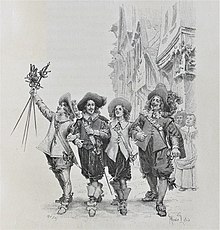A Brief History
On May 9, 2017, if the Toronto Raptors are still alive in the NBA playoffs they will again play the defending League Champion Cleveland Cavaliers in the second round of the 2017 NBA Playoffs. We know what a Raptor is, heck, we have all seen the Jurassic Park movies, but what is a “Cavalier?”
Digging Deeper
Several years ago, I remember watching television when a reporter asked Lebron James, the greatest Cavalier of all time and perhaps the finest overall basketball player in World History if he knew what a “Cavalier” was. Lebron sheepishly admitted at that time that he did not know, though we suspect he learned quite soon after the interview.
For those who are wondering, the term “Cavalier” was used as a slur against their enemies by the “Roundheads,” the side in the English Civil War (1642-1651) that was also called the “Parliamentarians,” the side against the Monarchy represented by King Charles I.

The “Cavaliers” were the traditionalists, also known as the “Royalists” that supported the King and the Monarchy. Although first used as a slur, the Royalists themselves soon took to calling themselves Cavaliers, and the term became synonymous with the wearing of dashing and fashionable clothing, as was common among the Royal Court of the day. That is why you see the Cleveland Cavaliers logo depicting a large fancy feather hatted guy with a sword in play, cape billowing behind him, sort of a ‘3 Musketeers’ type of look.

In case this information is not quite enough, you will be glad to know the archetypical Cavalier is represented by Prince Rupert of the Rhine, a Prague born German do everything guy (Most interesting man in the world?) who dabbled in Naval, Cavalry and other military pursuits, science, art, sportsmanship and politics. Rupert served as the Commander of Cavalry for Charles I. This wealthy and dashing man is the prototype for what we think of as “Cavalier.”

The dictionary expands on “Cavalier” to include a horseman, a lady’s escort, a gentleman adept in horsemanship and fighting, and of course, with a capital “C” the adherent of King Charles I. The word can also mean aristocratic, a brave and courteous gentleman, dashing and debonair. Oddly enough, as an adjective “Cavalier” can also mean somewhat frivolous and without regard to consequences (rash).
Question for students (and subscribers): If you have any questions about what the heck names of sports teams and where they came from, or interesting explanations for such naming, please share them in the comments section below this article.
If you liked this article and would like to receive notification of new articles, please feel welcome to subscribe to History and Headlines by liking us on Facebook and becoming one of our patrons!
Your readership is much appreciated!
Historical Evidence
For more information, please see…
McMenamin, Dave and Brian Windhorst. Return of the King: LeBron James, the Cleveland Cavaliers and the Greatest Comeback in NBA History. Grand Central Publishing, 2017.

